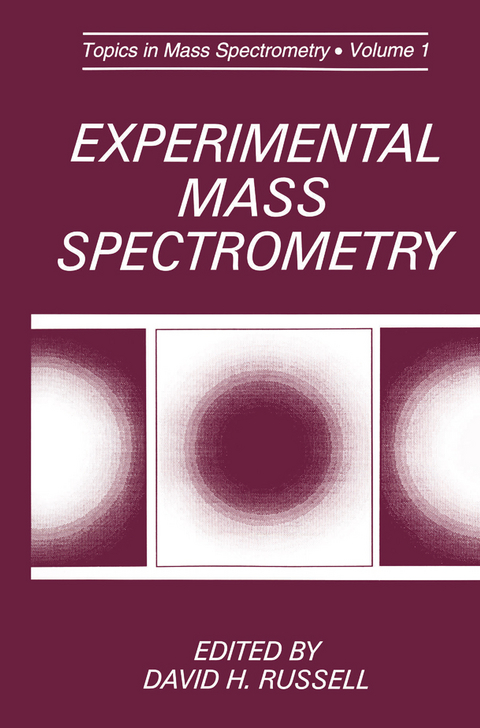
Experimental Mass Spectrometry
Seiten
1994
Kluwer Academic/Plenum Publishers (Verlag)
978-0-306-44457-9 (ISBN)
Kluwer Academic/Plenum Publishers (Verlag)
978-0-306-44457-9 (ISBN)
Mass spectrometry underwent dramatic changes during the decade of the 1980s. Fast atom bombardment (F AB) ionization, developed by Barber and coworkers, made it possible for all mass spectrometry laboratories to analyze polar, highly functionalized organic molecules, and in some cases ionic, inorganic, and organometallic compounds. The emphasis of much of this work was on molecular weight determination. Parallel with the development of ionization methods (molecular weight mass spectrometry) for polar biological molecules, the increased mass range of sector and quadrupole mass spectrometers and the development of new instruments for tandem mass spectrometry fostered a new era in structural mass spectrometry. It was during this same period that new instrument technologies, such as Fourier transform ion cyclotron resonance, radio frequency quadrupole ion trap, and new types of time-of-flight mass spectrometers, began to emerge as useful analytical instruments. In addi tion, laser methods useful for both sample ionization and activation became commonplace in almost every analytical mass spectrometry laboratory. In the last 5 years, there has been explosive growth in the area of biological mass spectrometry. Such ionization methods as electrospray and matrix-assisted laser desorption ionization (MALDI) have opened new frontiers for both molecular weight and structural mass spectrometry, with mass spectrometry being used for analysis at the picomole and even femto mole levels. In ideal cases, subfemtomole sample levels can be successfully analyzed. Sample-handling methods are now the limiting factor in analyz ing trace amounts of biological samples.
1. The Fragmentations of (M-H)? Ions Derived from Organic Compounds: An Aid to Structure Determination.- 2. Gas-Phase Chemistry of Alkali Adducts of Simple and Complex Molecules.- 3. Fundamental Studies of Collision-Induced Dissociation of Ions.- 4. Multiple Pulses and Dimensions in FTICR.- 5. Experimental Fourier Transform Ion Cyclotron Resonance Mass Spectroscopy.- 6. Elucidation of Protein Structure and Processing Using Time-of-Flight Mass Spectrometry.- 7. Electrospray Ionization Mass Spectrometry and Tandem Mass Spectrometry of Large Biomolecules.- 8. Liquid Chromatography/Fast Atom Bombardment Mass Spectrometry.
| Erscheint lt. Verlag | 30.4.1994 |
|---|---|
| Reihe/Serie | Selected Topics in Mass Spectrometry ; 1 |
| Zusatzinfo | XIII, 311 p. |
| Verlagsort | New York |
| Sprache | englisch |
| Maße | 155 x 235 mm |
| Themenwelt | Naturwissenschaften ► Biologie ► Genetik / Molekularbiologie |
| Naturwissenschaften ► Biologie ► Zoologie | |
| Naturwissenschaften ► Chemie ► Analytische Chemie | |
| ISBN-10 | 0-306-44457-7 / 0306444577 |
| ISBN-13 | 978-0-306-44457-9 / 9780306444579 |
| Zustand | Neuware |
| Haben Sie eine Frage zum Produkt? |
Mehr entdecken
aus dem Bereich
aus dem Bereich
50 Meilensteine der Genetik
Buch | Hardcover (2022)
Librero b.v. (Verlag)
CHF 13,90


